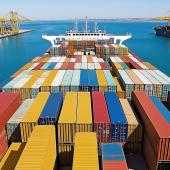Pastificio Felicetti measures the environmental performance of its new packaging
After switching entirely to 100% recyclable paper for the packaging of its products, Pastificio Felicetti is promoting an interesting initiative to assess the impact of this approach. The company based in the Upper Fiemme Valley commissioned the University of Trento to determine the degree to which the new paper packaging is actually more sustainable.
Based on a comparative Life Cycle Assessment (LCA) between the paper and plastic packaging solutions, researchers at the University of Trento were able to determine that paper packaging brings a significant reduction in two key environmental impact indicators: global warming (-30%) and consumption of non-renewable resources (-57%).
“The purpose of the LCA analysis is to identify environmentally critical points in a product’s life cycle and thereby enable companies to make environmentally responsible decisions,” said Riccardo Felicetti, CEO of the historic Predazzo-based pasta producer. “This makes it an essential tool for the people responsible for guiding a business through the now unavoidable transition process.”
The LCA analysis revealed that for all types of packaging examined, the biggest environmental cost is not attributable to the packaging process itself. It is the upstream stages (resource extraction and refining, electricity/fuel production, transport, etc.) and the core business of industrial-level production that have the highest costs for the planet. In the pasta sector, downstream processes including packaging, transport to the end customer/distributor and the product’s end-of-life stage all have a much lower impact.
Interestingly, long pasta was found to have a smaller environmental footprint than short pasta due to the dimensions of the packaging, which in turn affects palletisation and reduces the overall packaging volume.
However, the analysis showed that there is still a lot of work that needs to be done to further improve consumption levels. Because paper has greater mass than plastic, it gives rise to some critical issues during the packaging process such as a lower feed rate and consequently higher energy consumption of the packaging plant.




















